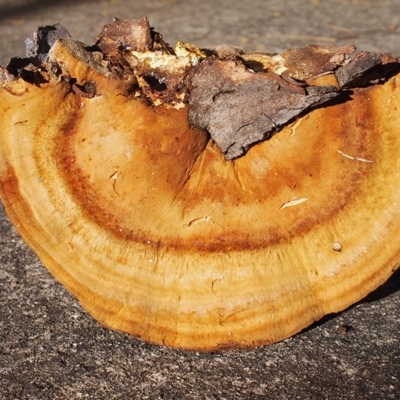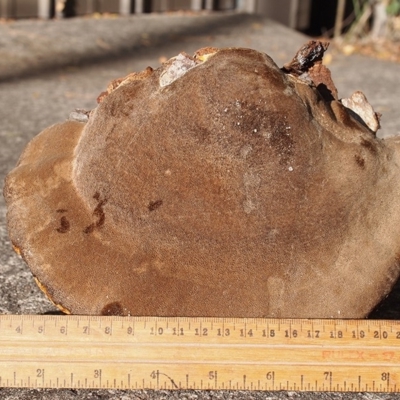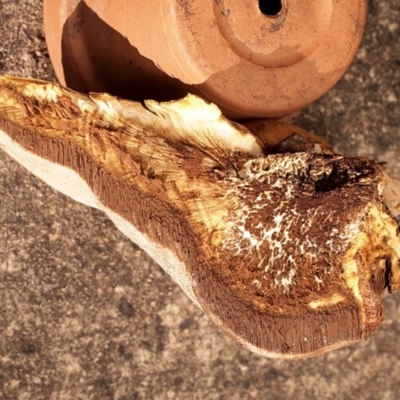Pseudoinonotus chondromyelus
The fruit body is a polypore that grows, somewhat shelf-like, from its host tree. It is fairly thick where it is attached to the tree, but narrows towards the outer margin. The fruit body has a tough, leathery texture. The upper surface is smooth and may be concentrically zoned in shades of orange-brown. The pored lower surface is dark brown when looked at straight on, but somewhat greyish if you view the lower surface from a shallow angle.
This is because the pore mouths are whitish to pale grey but the tubes (of which the pores are the opening) have brown walls.
When cut vertically you see a marbled core near the the attachment area.
This species was first described in 1964 (as Inonotus chondromyelus), based on a specimen collected from a eucalypt in the Adelaide hills.
Gallery
Regional distribution
Pseudoinonotus chondromyelus is listed in the following regions:









